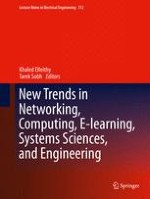
2015 | OriginalPaper | Buchkapitel
BORM-II and UML as Accessibility Process in Knowledge and Business Modelling
verfasst von : Vojtěch Merunka, Robert Pergl, Jakub Tůma
Erschienen in: New Trends in Networking, Computing, E-learning, Systems Sciences, and Engineering
Aktivieren Sie unsere intelligente Suche, um passende Fachinhalte oder Patente zu finden.
Wählen Sie Textabschnitte aus um mit Künstlicher Intelligenz passenden Patente zu finden. powered by
Markieren Sie Textabschnitte, um KI-gestützt weitere passende Inhalte zu finden. powered by